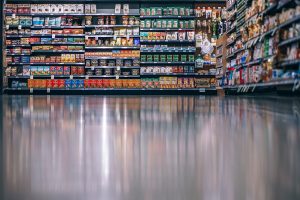
Now, is the time when it is consumers who are largely driving Consumer Packaged Goods (CPG) packaging choices. Several factors have contributed, like the increased concern for sustainability and the uprising of e-commerce. As the retail landscape continues to change, food and beverage packaging will have to make room for the changes to protect brand integrity.
In this article, Mr. Gaurav Jalan Founder, and Director of Packman Packaging Private Limited (India’s leading corrugated boxes and food packaging supplier) tells about the top food and beverage packaging trends to expect in 2020.
Sustainable Food And Beverage Packaging
Brands are adopting the concept of reduce, reuse, and recycle to heart. Not does only it make sense in terms of their own expenses and sustainability actions, but it also reverberates with consumers.
Consumers want to make a responsible selection in the products they buy daily, and food and beverage packaging designed with sustainability in mind creates an impression. Though there is no single solution to sustainability issues, packaging designers, processors, recycling equipment owners, and communities are viewing these issues from various angles.
Post-Consumer Resins (PCR)
Post-consumer resins (PCR) comes from consumer product packages such as water bottles and shampoo bottles that are recycled. Many brands are using PCRs in their packaging, though there are some challenges.
PCR material usually has a greyish or yellowish tint that makes it difficult for brands to match their brand colors, but better technologies are being invented to address this. Research shows that the use of PCR can greatly reduce carbon footprint as compared to the creation of virgin plastics. Furthermore, the use of PCR can help keep microplastics away from the ecosystem.
E-Commerce Packaging
Owing to busy lifestyles. consumers now prefer to buy groceries online. When the stage of sale occurs on a digital device, the packaging and delivery processes become more difficult.
A package on the retail shelf may have been handled numerous times before someone takes it home. Approximately up to 30 touches could happen before an e-commerce item reaches the buyer. Therefore, food and beverage packaging should increasingly meet the demands of e-commerce in terms of product safety while still attending to aesthetics, comfort, and buyer demands for sustainability.
Interactive Packaging
Interactive packaging has been there for some time now, but new technological improvement is being added frequently. For instance, augmented reality has entered the scene, with packaging that provides games and other experiences that attracts the consumers. Whereas baby boomers and members of X generation have embraced interactive packaging, Millennials and their younger counterpart are expected to embrace it even more enthusiastically. Food and beverage packaging design has never been simple. Recent technological achievements, along with buyer demand for sustainability, have only added to the difficulty of developing packaging that meets consumer needs and wishes. The better news is that packaging manufacturing is becoming highly advanced, making it simpler for food and beverage brands to avail packaging options that work for them while maintaining consumer loyalty.


